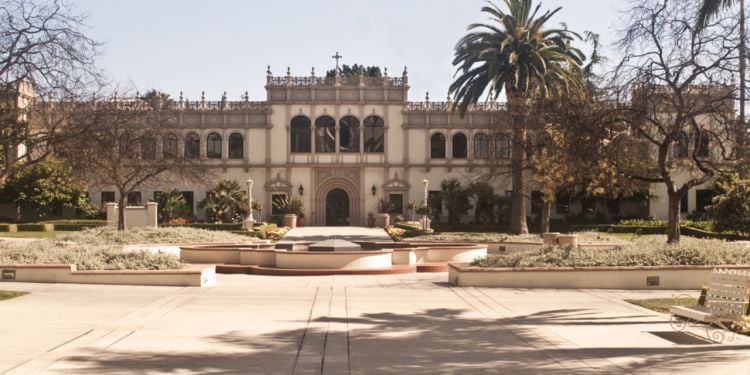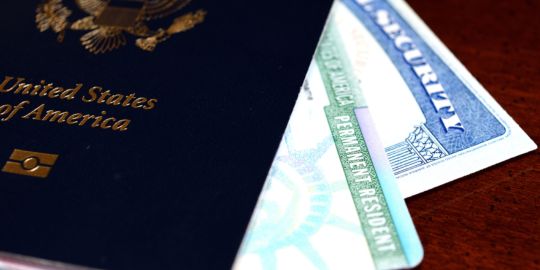Studying in San Diego

San Diego has great beaches and great weather, but it's more than just a surfers' paradise; it's also the eighth largest city in the USA and the second largest in California after Los Angeles, with a lively arts culture, great breweries, and amazing food. San Diego also shares its borders with Mexico, meaning the culture of the city is influenced heavily by both American and Mexican cultures and many people speak both Spanish and English. If you're looking to move to San Diego for your studies, here is all that you need to know. Feel free to ask your questions on the
Where to study in San Diego?
San Diego may be known as the city of beaches and surfers — but it's also home to a significant student population. The University of California campus in San Diego hosts close to 11,000 international students on its own and San Diego State University adds 2,000 more. Like most large US cities, San Diego is home to many educational institutions but the University of California San Diego and San Diego State University tend to be considered the top two.
University of California San Diego
Founded in 1960, UC San Diego is a public state university. It's ranked 62nd in the QS worldwide ranking system. Among its former students, there are 20 Nobel prize winners, three Fields medallists, and two Pulitzer Prize winners.
The university is famous for its research centers, which include eight medical faculties and a partnership with the prestigious Stanford University. It also works in collaboration with the Scripps Institution of Oceanography and regularly takes part in ocean-based research. UC San Diego is part of the National Sea Grant College Program, founded in 1966, which offers scholarship programs in the field of ocean research. Another notable program is the National Space Grant College and Fellowship Program, founded in 1988 and managed by NASA, which is active in the development of space research.
The university hosts over 11,000 international students and is known to be a cultural hub thanks to its incredibly diverse student community. UC San Diego offers a plethora of programs ranging from anthropology and visual arts to chemistry and oceanography for undergraduates. Graduate students can choose from a wide range of programs for their Masters or PhD.
UC San Diego is a public university where enrollment fees are lower compared to other universities such as Stanford. In-state tuition costs approx $15,000 per year while out-of-state students are expected to pay about $45,000 per year. The acceptance rate at the university currently stands at 34.2%.
San Diego State University
Founded in 1987, San Diego State University is a well-respected public university. With a population of over 35,000, international students make up about 2,000 of that total. It has been recognized as one of Forbes' America's Best Value Colleges, highlighting its commitment to providing a high-quality education at an accessible cost. SDSU is also renowned for its top-notch study abroad programs, offering students valuable international experiences. This cross-cultural approach also means it's an excellent host for international students.
The university offers a diverse range of academic programs, particularly excelling in business, engineering, health sciences, international relations, and the arts. Although the campus is not on the coast, unlike UCSD, the campus life is vibrant and it's known for its strong sports and athletic culture.
SDSU is also part of the National Space Grant College and Fellowship Program, which provides grants for aviation, science and space studies programs. Known for being accepting and focussed on diversity, SDSU is known for being inclusive of minorities and LGBTQ students.
To study at SDSU, you will need around $20,000 per year for tuition fees (in-state tuition is approx $8,000 per year). The acceptance rate is 37.9%.
Student life in San Diego
In the US, campuses are often self-contained, places where you can not only study but also live, eat out, and enjoy various activities. Many students prefer spending most of their time on campus because of the great infrastructure. You'll find libraries, bookshops, coffee shops, and even a university boutique, all run by fellow students, offering part-time job opportunities.
San Diego's university campuses have a laid-back vibe. They're usually smoke-free and alcohol-free, creating a peaceful atmosphere. If you're up for some fun, head to Pacific Beach, which is conveniently close to the UCSD campus, where students like to party.
When you move to San Diego, get ready to be part of sports activities. You might be surprised by how important and frequent sporting events are on campus, something that often catches European students off guard. So, if you're into sports, you'll definitely have a blast here!
Everyday life in San Diego
San Diego has a couple of famous student neighborhoods, each with its unique vibe. Hillcrest is a more upscale area, while Ocean Beach is a lively spot with plenty of concerts and events happening. There are cool piers where people like to hang out and party, with a hippie vibe inherited from the 1970s. For the surfers, Pacific Beach is a must-visit spot, offering great waves and cozy restaurants and bars to chill at.
Craft beer enthusiasts might find it hard to focus on their studies here, as San Diego boasts around 140 breweries offering affordable tasting sessions.
Regarding transportation, having a car is ideal in San Diego. But if you don't, there are definitely alternatives. The city also has a reasonably efficient public transport network called MTS, though some trips might take a bit longer. For more urgent trips, you can rely on Uber or Lyft. Consider sharing the trip to get a better price.
One thing to remember: Americans use the imperial system (pounds, miles, etc.) instead of the metric system. Keep that in mind when you go grocery shopping or enjoy a beer at one of the local spots. Embrace the laid-back and fun atmosphere of San Diego, and you'll have a blast!
A student schedule in San Diego
Student life in San Diego follows a structured schedule to promote discipline and success. Right from your first year, a dedicated coordinator will guide you, ensuring you don't get lost navigating the various courses across different campus locations. Planning your day wisely is crucial to make the most of your time.
Bachelor programs typically include various general courses, providing a well-rounded education. As you progress through the first two years, you'll have the opportunity to explore and specialize in a specific field that aligns with your career goals, interests, and strengths. This flexibility allows you to tailor your academic journey to suit your individual path.
Cost of living in San Diego
San Diego is the 6th most expensive city in the US regarding renting. The average rent of a San Diego apartment is above $2,900 — but prices vary significantly across different neighborhoods. For those looking to save on rent, having roommates can be a good option.
Regarding other expenses, prices in San Diego are higher, like in most of California. A meal out at an inexpensive restaurant will probably cost around USD 25. Buying groceries and cooking at home may be the more economical option: expect to pay around USD 1.14 for a gallon of milk and around $4.80 for a dozen eggs. The average price of a gallon of gas is upwards of USD 1.40.
How to apply for a student visa to the US?
If you are considering studying in the United States, the first step is to apply for a student visa. You have several visa options, including the F1, M1, or J1 visa.
The F1 visa is generally for international students pursuing academic programs, while the M1 visa is designed for those enrolling in technical or vocational courses. It is important to complete the necessary formalities and pay the required visa processing fees.
Students holding an F1 visa are allowed to work, but their employment options are limited to on-campus positions or specific roles related to their field of study. However, off-campus work is not permitted during the first year.
Another option is the J1 visa, mainly intended for students participating in international exchange programs. Additionally, all students must obtain health insurance coverage during their stay.
For more comprehensive information on visa requirements and related procedures, you can refer to the US Expat Guide, a reliable resource to guide you through the visa application process.
Working in San Diego part-time as a student
As mentioned, you have some work options available while studying in the US. However, it's essential to remember that the opportunities for work on a student visa come with strict limitations since your primary focus should be on your studies. If you choose to work, San Diego offers a variety of options to explore. Many universities provide on-campus work opportunities in places like libraries, coffee shops, and student activity centers. Off-campus work possibilities are also available, but it's crucial to ensure that your employment aligns with the regulations set out in your student visa. Applying for internships in your field of study is a great option, and for advice and recommendations, consulting your on-campus student advisor once you're in San Diego is probably the best way to find suitable work.
To find a job in San Diego, have a look at Expat.com's job section or seek help from the San Diego expat network. Networking and word-of-mouth are highly reliable in this city, like in the rest of the country.
What is student life in San Diego like?
San Diego is a fun city that offers lots of cultural, culinary, and outdoor activities to enjoy. Unlike the hustle and bustle of Los Angeles, San Diego has a more laid-back environment, perfect for both studying and leisure. However, it's still one of the largest cities in the USA, so if you come from a small town, the city may well feel a little overwhelming at first.
The city's culture is vibrant and diverse, with a strong Mexican influence due to its border town status and a sizable Hispanic population. San Diego's long-time connection to the US military (it's home to a naval base) is also woven into its cultural fabric.
You'll never run out of things to do in San Diego. From hiking trails and scenic beaches to delicious dining and exciting theme parks, the city can distract you from your textbooks.
The world-famous San Diego Zoo is a must-see, and the city boasts one of the world's largest open-air auditoriums, in which many famous touring acts and musicians perform. For students on a budget, San Diego has you covered with many museums offering discounted rates.
As an added bonus, being close to the Mexican border allows students the opportunity to head off on trips to wild spring break destinations like Cancún or Cabo.
Important:
Before planning your trip abroad, make sure you are aware of all the visa-related procedures. You will also need to make sure that you can leave and come back to the US on your current visa.
When studying in the city, you will also get a taste of its famous surf culture. For instance, UC San Diego doesn't have a football team, but they do have a surf team instead. So, getting a surfboard and a wetsuit may be a promising investment.









